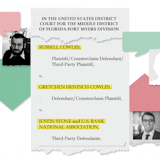The cost of the proposed high-speed Northern Lights Express rail line from Minneapolis to Duluth has gone up -- way up -- to nearly $1 billion, according to state officials.
Even the more conservative estimate of $615 million recently advanced by supporters of the rail line is nearly double last year's $360 million price tag.
"The Northern Lights Express estimate of $615 million is probably good to go in current dollars," said MnDOT project manager Dave Christianson. "The difference is, we've come up with what many might call a worst-case scenario, and after identifying some of the shortcomings in the system, the state rail plan will stick with $990 million as the high range of the cost."
With no guarantee of federal stimulus money next spring and 40 states competing for federal dollars, consultants for MnDOT and the Northern Lights Express line, nicknamed NLX, need to reach agreement on the line's cost in the next several weeks if the state is to submit a competitive application for federal funding. Federal money could pay for up to 80 percent of the project.
But at the moment, they seem further apart than the 155 rail miles separating the Twin Cities and the twin ports of Duluth and Superior, Wis. Other Minnesota cities that would be affected between the northern- and southern-most destinations are Hinckley, Cambridge and Coon Rapids.
Those three station cities, along with Superior, were chosen to host public open houses to discuss the line, beginning with Thursday's 4:30 p.m. meeting at Cambridge's Armed Forces Reserve Community Center.
If the line is to open in 2012 or 2013, the keys to its commercial success could be found in Hinckley, where Grand Casino and the Mille Lacs Band of Ojibwe will strongly influence where a station is built, and in Cambridge, where the passenger line could transform into a commuter line that changes the culture of the northern suburbs and exurbs.
As for Coon Rapids, Anoka County's largest city could see its Foley Boulevard station become a transportation hub, with the Northern Lights Express and Northstar commuter rail line running through it. Currently, the Northstar Line stops in Coon Rapids, but not at the Foley station. But with the advent of NLX, the Foley station could make sense as a stop for Northstar, which runs east-west from Minneapolis to Big Lake and could mesh there with a commuter train that runs north-south from Minneapolis to Cambridge.


